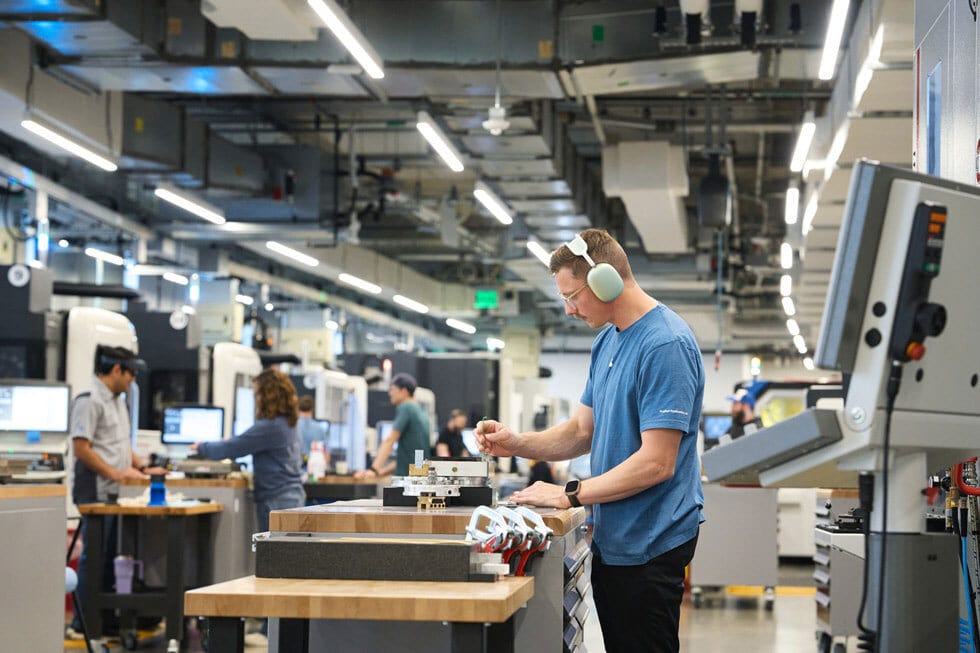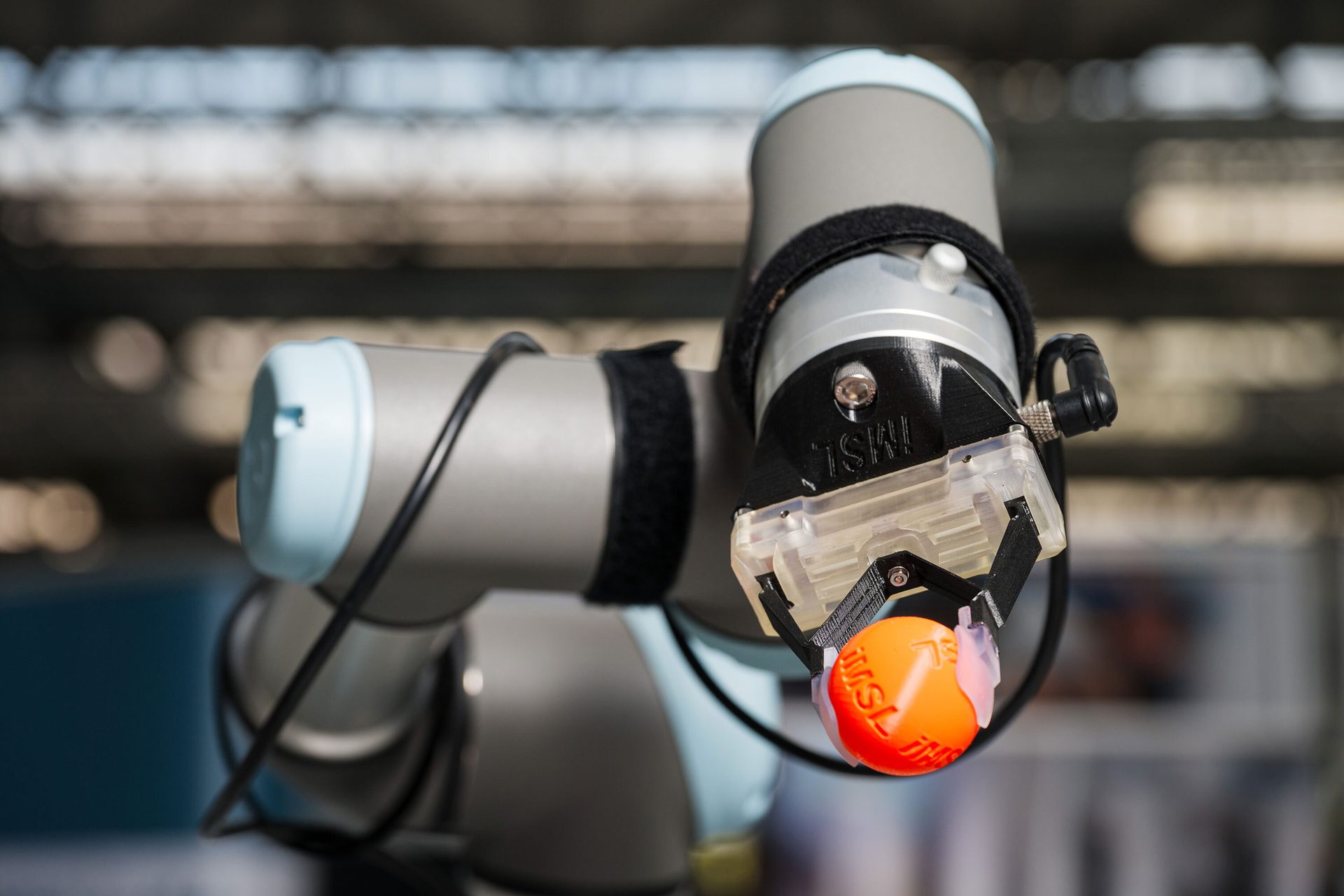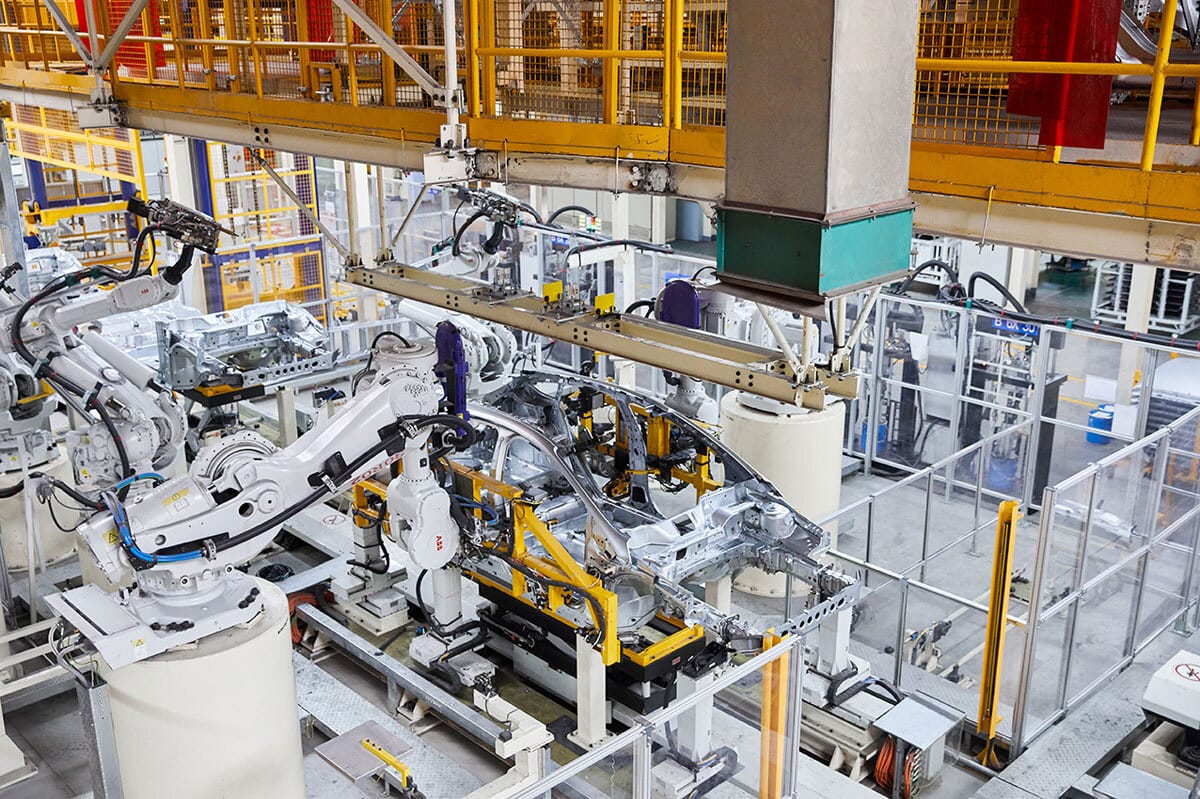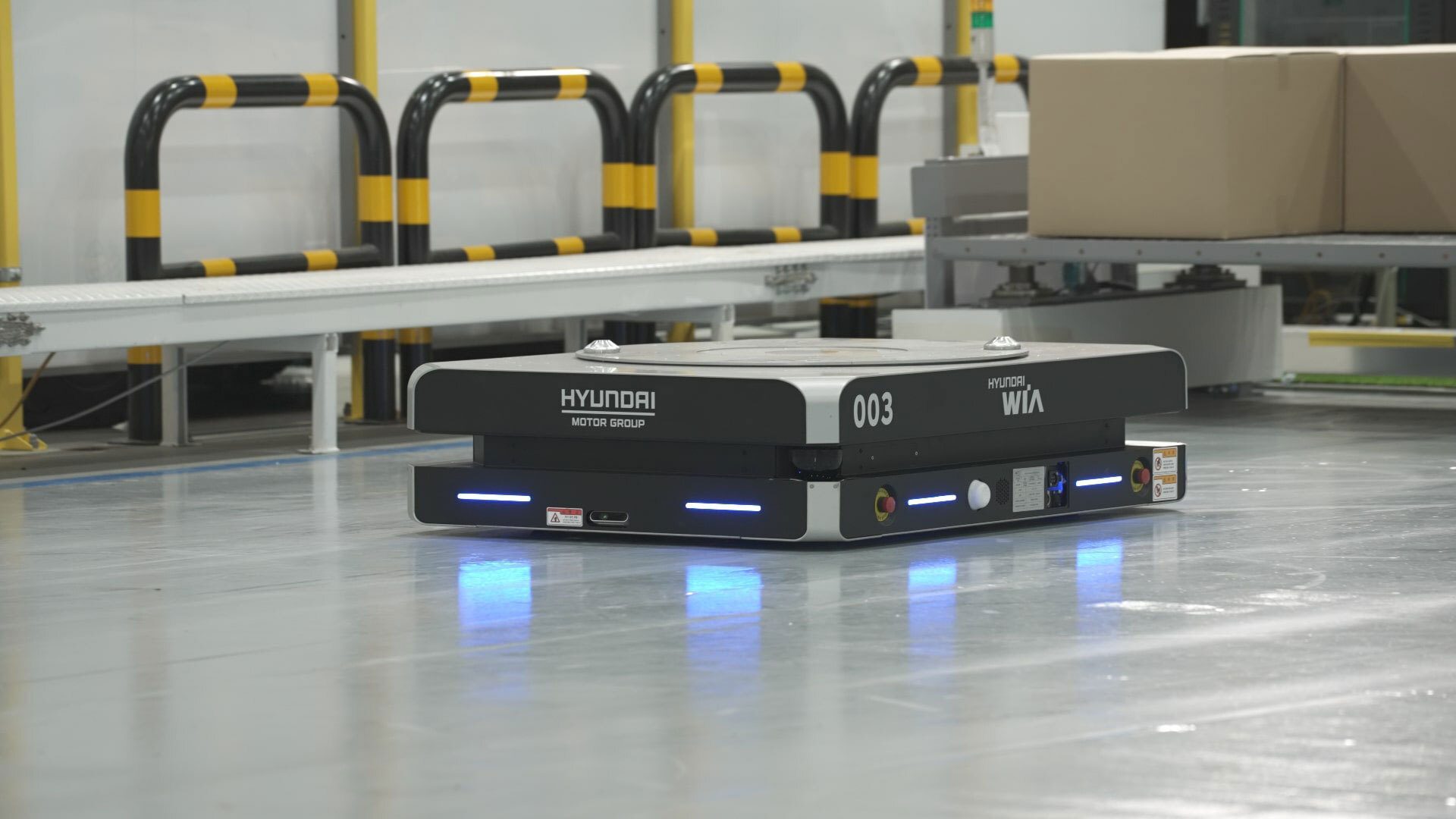ASSEMBLY LINES
Apple to Invest Billions in U.S. Manufacturing
CUPERTINO, CA—Apple Inc. plans to invest more than $500 billion in America over the next four years. As part of the initiative, the company is building a 250,000-square-foot factory in Houston that will mass-produce servers.
In addition, Apple will double its U.S. Advanced Manufacturing Fund, create a training academy in Detroit, and grow its domestic R&D investments to support cutting-edge fields like artificial intelligence and silicon engineering.
“We are bullish on the future of American innovation, and we’re proud to build on our long-standing U.S. investments with this…commitment to our country’s future,” says Tim Cook, CEO of Apple. “And we’ll keep working with people and companies across this country to help write an extraordinary new chapter in the history of American innovation.”
Apple plans to invest billions of dollars in initiatives that will boost U.S. manufacturing. Photo courtesy Apple Inc.

According to Cook, the new facility in Houston will assemble servers that support Apple Intelligence, a “personal intelligence system that helps users write, express themselves and get things done. Previously manufactured outside the U.S., the servers that will soon be assembled in Houston…are the foundation of Private Cloud Compute, which combines powerful AI processing with the most advanced security architecture ever deployed at scale for AI cloud computing.”
Another key part of Apple’s investment is its U.S. Advanced Manufacturing Fund, which was created in 2017 to support world-class innovation and high-skilled manufacturing jobs.
“The growing commitment will increase the fund from $5 billion to $10 billion, focused on promoting advanced manufacturing and skills development throughout the country,” explains Cook. “The fund’s expansion includes a multibillion-dollar commitment…to produce advanced silicon in TSMC’s Fab 21 facility in Arizona. Apple is the largest customer at this state-of-the-art facility, which employs more than 2,000 workers.”
In addition, Cook says that Apple plans to hire around 20,000 people, with the majority of positions focused on R&D, silicon engineering, software development, AI and machine learning.
The new Apple Manufacturing Academy in Detroit will work with academia and consult with small- and medium-sized businesses on implementing AI and smart manufacturing techniques.
“The academy will also offer free in-person and online courses, with a skills development curriculum that teaches workers vital skills like project management and manufacturing process optimization,” says Cook. “The courses will help drive productivity, efficiency and quality in companies’ supply chains.”
Smart, Energy-Efficient Robotic Gripper Cuts Production Costs
SAARBRUCKEN, Germany—Engineers at Saarland University recently used lightweight, shape-memory materials to create a non-pneumatic robotic gripper that can safely hold and manipulate workpieces without requiring a continuous supply of energy. The device consumes 90 percent less electricity than traditional grippers.
The electric gripper is composed of bundles of ultrafine wires made from nickel-titanium shape memory alloy (SMA). The wires act not only as powerful muscles, but as nerve fibers as well. They enable the flexible fingers to quickly adapt to changes in the shape of a workpiece.
The behavior of the wire bundles is due to a special property of nickel-titanium alloy that enables it to switch between two different crystal lattice structures. If an electric current flows through a wire made from nickel-titanium, the material heats up, causing it to adopt a different crystal structure with the result that the wire becomes shorter.

This robotic gripper requires 90 percent less electricity than conventional devices. Photo by Oliver Dietze courtesy Saarland University
When the current is switched off, the wire cools down and returns to its earlier crystal lattice structure and its original length. The material appears to remember its original shape and to return to it after being deformed. The wires are able to exert remarkably large forces for their size and can be made to trigger tiny, controlled motions in whatever smart technology the engineers have attached to these minute artificial muscles.
“The work we’re doing can help bring about a significant reduction in energy consumption, reducing production costs as well as helping to protect the climate,” says Paul Motzki, Ph.D., professor of smart material systems for innovative production at Saarland University and CEO of the Saarbrücken Center for Mechatronics and Automation Technology. “We can control these gripper systems in real time and whenever needed. All we need to do is apply a short pulse of electric current.
“Nickel-titanium SMA has the highest energy density of all known drive mechanisms, so by using this material, we’re able to exert a substantial tensile force in very small spaces,” Motzki points out.
A wire with a thickness of only half a millimeter can exert a pull of some 100 newtons. However, Motzki and his colleagues use bundles of much thinner, ultrafine wires, because more wires mean a greater surface area and faster cooling rates. This means that the wire muscles can deliver rapid, high frequency motions and a stable tensile force.
Using a bundle of 20 ultrafine wires, each with a diameter of only 0.025-millimeter, they can exert 5 newtons of force at a frequency of 200 hertz. In some applications, the size of the force delivered is most important, in others it is the frequency with which the force is applied.
Traditional grippers usually rely on feedback from sensors, but Motzki’s technology is self-sensing. The system is controlled by a semiconductor chip.
“The shape-memory wires effectively act as fully integrated sensors providing us with all the necessary data,” says Motzki, “An AI system precisely correlates the electrical resistance data with a particular deformation of the wires. As a result, the system always knows the exact position of each bundle of shape-memory wires.
“The data-trained neural networks are able to calculate positional information efficiently and accurately, even in the face of disruptive influences,” explains Motzki. “[We] can therefore program the system to perform highly precise movements. By specifying the electrical resistance values, we can control the wires as needed.
“Unlike standard industrial robots in use today, reprogramming is quick and easy with our system and can even be done on the fly when necessary,” claims Motzki. “The gripper can adapt to the geometry of different workpieces while operating.”
Flexible, Connected ‘Smart Factories' Are Vital to Mixed-Model Auto Assembly
ZURICH—Advanced manufacturing technology will play a key role as the automotive industry continues to transition to mixed-model assembly of internal combustion engine (ICE), hybrid and electric vehicles. According to a recent survey conducted by ABB Robotics, artificial intelligence, robotics and other types of automation will help automakers and suppliers address a variety of production challenges.
“Automotive manufacturers are acutely aware that advanced robotics, AI and digital twin technology are positive drivers of change,” says Joerg Reger, managing director of the automotive business line at ABB Robotics. “Together, these technologies are forming the building blocks of smart factories, which will help automakers introduce new models more quickly and cost-effectively, while greatly reducing energy consumption and costs, and meeting sustainability targets.”
Artificial intelligence, robotics and other types of automation will play a key role in overcoming a variety of challenges facing automakers. Photo courtesy ABB Robotics

The survey highlighted the importance of robotics and advanced automation with 64 percent of respondents agreeing there would be an increase in the use of autonomous mobile robots in automotive manufacturing, while 57 percent believe that more collaborative robots will be introduced alongside workers to perform repetitive assembly tasks.
Respondents cited a major leap for the industry driven by generative AI and software, with 82 percent agreeing that leveraging this technology has the potential to reduce vehicle manufacturing costs, improve quality and streamline the introduction of new models. The adoption of digital twins and simulation technology is also expected to rise significantly, according to 73 percent of respondents.
In addition, the survey underlined how flexible manufacturing is viewed as a crucial way to navigate today’s market complexities. These include unpredictable levels of demand for certain vehicle types including EVs, hybrids and ICE vehicles, with manufacturers needing to assemble different power trains on a single site, while maintaining faster product lifecycles. Over the next five years, 84 percent of those surveyed predict that flexible manufacturing will be a significant factor in vehicle assembly.
“Flexible manufacturing is essential when it comes to managing the very real complexities, as well as financial commitments, many carmakers currently need to tackle,” claims Reger.
“The ability to quickly add extra and different assembly capacity as a module—when customer demand for a particular model suddenly increases or a new power train is available—without disrupting production or requiring significant capital expenditure remains vitally important,” explains Reger.
While survey respondents supported the introduction of new technology and smart factories positively, they also expressed concerns. High initial costs (54 percent) were viewed as the biggest constraint, while technical challenges (35 percent), cybersecurity and data protection (32 percent) all featured prominently, as did workforce adaptation (32 percent) and the lack of skilled employees (28 percent).
Hyundai 5G Technology Enables ‘Smart’ Manufacturing
SEOUL—Hyundai Motor Group recently completed a successful pilot project for private 5G RedCap (reduced capability) technology. The automaker worked with Samsung Electronics Co. on the R&D project.
Private 5G is a dedicated system installed onsite using a specific frequency band, ensuring no external interference and seamless data transmission. It is important for smart manufacturing initiatives, because it supports centralized control of industrial robots and devices. It can also be tailored for optimized environments and stable communication.

Hyundai has deployed 5G networking technology in its factories to control automated guided vehicles. and autonomous mobile robots. Photo courtesy Hyundai Motor Group
The technology features simplified device configurations, compact infrastructure and reduced bandwidth usage. This results in lower power consumption, cost efficiency and improved performance over traditional Wi-Fi in speed, data processing, connection stability and low latency. The technology enables high-speed wireless communication for small tools, cameras and tablets.
Hyundai tested Samsung’s system with its in-house vehicle inspection equipment. Engineers developed a custom device to verify the network’s operational capabilities.
The company applied the technology on automated guided vehicles at its flagship assembly plant in Ulsan, South Korea. It also adopted the technology at its U.S. factory in Montgomery, AL, to operate a fleet of more than 200 autonomous mobile robots.
“The implementation of the technology at [our] plants in Korea and the U.S. has significantly reduced communication disruptions and downtime,” says Jae Min Lee, vice president and head of the E-FOREST Center of Hyundai Motor and Kia. “[We have] also developed a patented dual wireless communication [system] combining 5G networks with Wi-Fi, leading to zero communication-related downtime since its deployment.”







